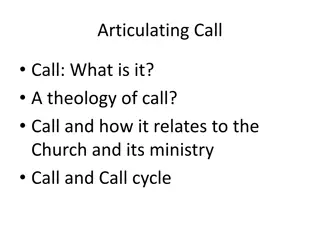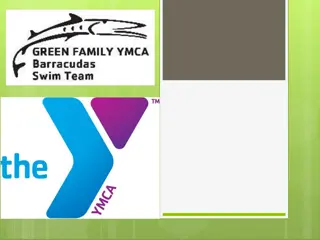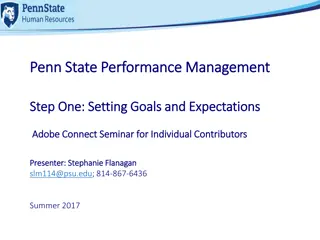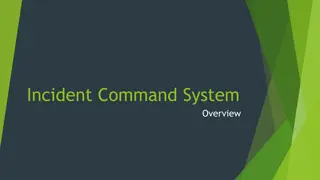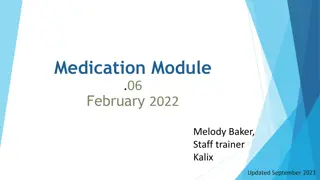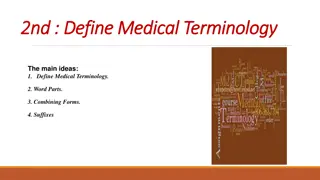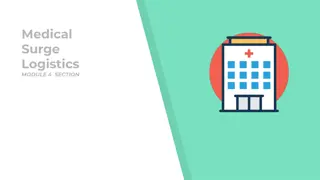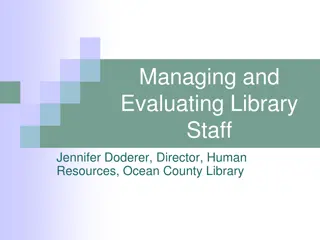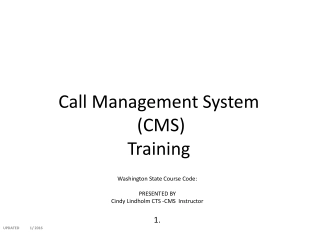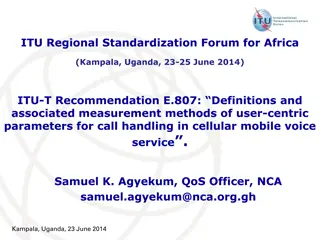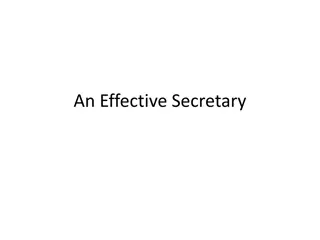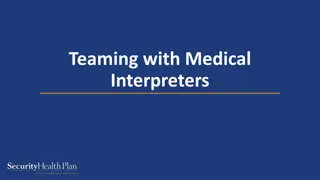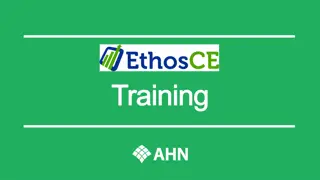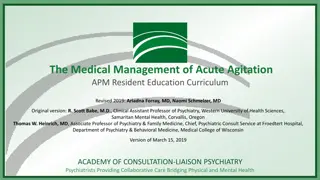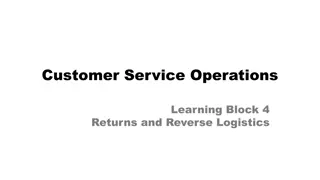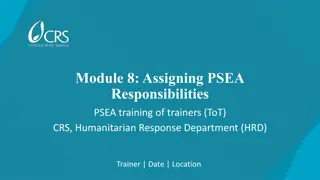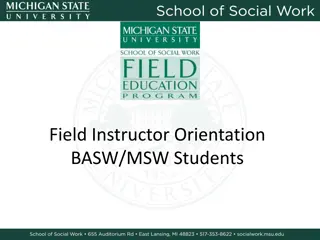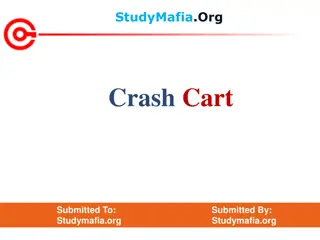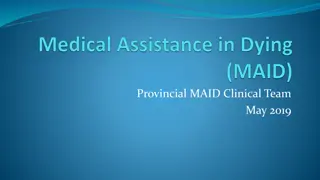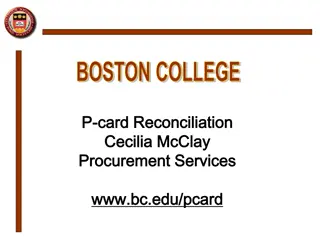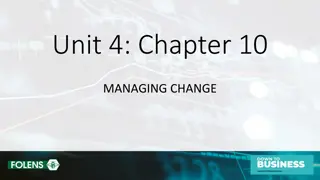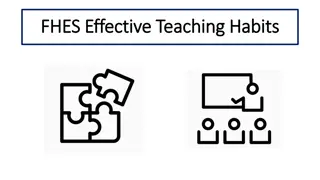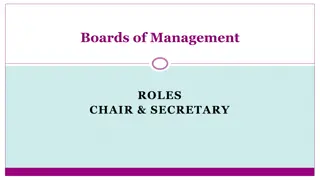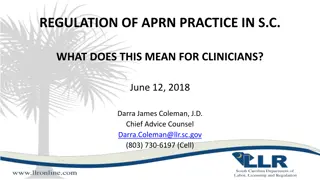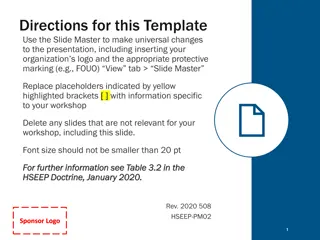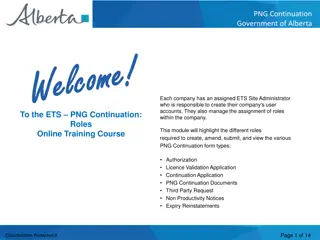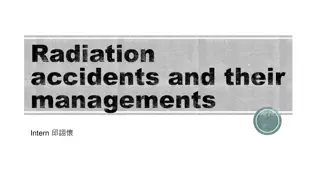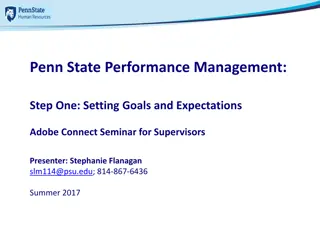Effective Strategies for Managing On-Call Responsibilities in a Medical Setting
Utilizing practical tips, structured handover models like SBAR, and fostering teamwork are crucial elements in effectively managing on-call responsibilities in a medical environment. From preparing before the shift to executing handovers and utilizing the bleep system, these strategies help ensure smooth operations and proper patient care during on-call duties.
Uploaded on Sep 13, 2024 | 0 Views
Download Presentation

Please find below an Image/Link to download the presentation.
The content on the website is provided AS IS for your information and personal use only. It may not be sold, licensed, or shared on other websites without obtaining consent from the author. Download presentation by click this link. If you encounter any issues during the download, it is possible that the publisher has removed the file from their server.
E N D
Presentation Transcript
MANAGING ON CALLS, REFERRALS, ESCALATION AND HOSPITAL AT NIGHT Dr Trisha Sengupta Junior Clinical Fellow
Timings and Nomenclature Depending on which department timings may be different Medicine On calls usually 13 hour shifts- NIGHT 9pm to 10 am DAY 8.30am to 9 pm ED: variable(12 to 8 or 1 to 9 or 2 to10) On Team: Consultant , SpR (Registrar- ST3/ Senior Clinical Fellow), SHO(Senior House Officer/Clinical Fellow/ Trust Grade/IMT1/2/FY2/FY3) and F1( foundation year 1)
Tips for a successful On Call Team Work and making sure your team is okay Delegating and asking for help Empathy and Responsibility
Before On Calls Have a good day/night of rest Try to arrive 5-10 mins before your shift starts so you have time to change and get acquainted print out the handover carry food and water--M&S Foods, Pret etc all close at 6.30pm Identify roles , priorities and names of your team--usually Whatsapp group to join--or at least make a note of the bleeps and contact numbers
HANDOVER Collect your bleep from your previous colleague who will be handing over to you--red bleeps are cardiac arrest bleeps--and the cardiac arrest team has a huddle after the handover at 9.30pm/9.15 am morning Handover usually SpR to SpR ; and for ward cover in Medicine will be ward cover to ward cover SHO Consists of outstanding jobs from the list, reviewing sick patients, following up on urgent bloods/imaging If you are carrying a arrest bleep-to attend a cardiac arrest call promptly
Structured Handover Model /Approach-SBAR SBAR can be used very effectively to escalate a clinical problem that requires immediate attention, or to facilitate efficient handover of patients between clinicians or clinical teams. SBAR stands for: Situation Background Assessment Recommendation These are the key building blocks for communicating critical information that requires attention and action thus contributing to effective escalation and increased patient safety
Handover Model /Approach-SBAR
The Bleep Good to clip it on your scrubs/lanyard/pocket have your own system of making a jobs list-I usually have a manual paper-which has 2 columns-Bleeps and sick patients to review to bleep: 88--->the number you want to bleep--->the extension that you want to be called back on Try bleeping back as soon as you can--you never know if the bleep is just for a prescription or for a really sick patient
MEDICAL SHOs St James SHO(bl 6406)-Covers St James Wing seperate AMU SHO for AMU Lanesborough SHO (bl 6030) covers the wing and also clerks in any Haem/Oncology patient
During On calls When you return a bleep/arrive to a ward -introduce yourself to the nursing staff and patient - review the patient/ the job - let the NS know when you are done and what action if any they have to take - let them know how to contact you If you are ward cover-can get bleeped for the wards you are covering in your wing If you are clerking--you are seeing new patients coming to the A&E APPS that are your best friends: Microguide BNF for medication indications contraindications renal dosing and doses INDUCTION for all the numbers/bleeps UpTpDate or NICE for recent guidelines Our own St George's Intranet has all guidelines on the Grey Book ( if you search for intranet on the internet bar or simply click the home icon) GEEKY MEDICS MIND THE BLEEP
Basic Structure for Review: Ward Review: -A-E approach -after A-E, check patient investigations bloods relevant imaging previous documentation -order whatever relevant tests -check medications he is on -check observations
Basic Structure for Review: Clerking: Check details and ambulance/LAS summary first take history from patient in usual format with -presenting complain -HPC -Past medical History -Medications and Allergies--very important to record exactly what allergic recation the patient has-- rash/anaphylaxis -Family history -recent GP/ hospital appointments -Examination : systemically -relevant investigations so far -your clinical impression -your management plan -Once you have a plan and discussed with Senior-order tests/ make prescriptions and ensure you have informed the nursing staff to get those done--remember the patient is now your responsibility
ESCALATION AND REFERRALS If you are concerned a patient is very unwell/ rapidly deteriorating or needs a higher/specialist lever of care-- DO NOT HESITATE TO ESCALATE!! PATIENT SAFETY IS ALWAYS KEY--IT IS GOOD PRACTICE TO ASK FOR HELP AND SUPPORT Registrars and Consultants are very approachable Escalation must be TIMELY, FOCUSED, ACCURATE Remember we are junior doctors and not expected to handle everything alone --- it is better to be safe than in doubt If you are feeling any uneasiness or doubt--that is a sign to escalate!
ESCALATION AND REFERRALS Escalation ladder/support: -first speak to your registrar -Med Reg bleep 6613 -Advanced nurse practioners- bl 7740 -surgical reg bl 7370 -if it is a cardiac arrest --put out a call 2222 ( can be put out even in peri arrest) -CCOT CRITICAL CARE OUTREACH TEAM: Bleep 8772 -Anesthetist bleep: 6111
When to refer: when patient has high NEWS score or in a peri arrest situation
When to refer: when patient has high NEWS score or in a peri arrest situation
Consider referral to Critical Care Outreach Team on bleep 7980/8772 if:
Consider referral to Critical Care Outreach Team on bleep 7980/8772 if: All ward referrals for Unplanned Admissions to ICU will now go through the Critical Care Outreach Nurse Bleep 7980 Resus Huddle: 09.15am outside Monckton Well SBAR handover over the phone. Patient assessed by parent team and relevant treatment/investigations started: ABG, CXRay ordered. If peri-arrest please call us straight. DISCUSS and DOCUMENT TEP EARLY. Specific reason to refer patient: deterioration requiring review/advice, not to be aware of . Any member of staff can refer to CCOT, including nursing staff. If increasing O2 requirement and performing ABG, please do not leave patient on room air.
Radiology and Imaging: All scans need to be ordered Xrays do not need vetting; however CT , US scans and MRI needs vetting--to discuss with Radiology on call- why this patient needs that particular scan ( ext 0168/4290) Make sure you have mentioned all the pertinent information bloods, clinical history while ordering the scan NG Tube- once a NG Tube is in and we cannot get accurate aspirate pH(less than 5)- Chest XR needs to be ordered, reviewed , reported and feed started within 2 hours--so ensure you are on top of that!! all images can be reviewed on PACS--which should be on your toolbar--if PACS not working can contact them on 2665
TEAMWORK Ensure you are respectful and kind towards all the staff-including nurses, porters, colleagues, other departments Ensure you have taken breaks and checked in with your colleagues as well Nursing staff are your best friends and allies:
Capacity and Consent: Out of our scope today: Patients should be asked for consent prior to any medical intervention including physical examination Patients with capacity have the right to refuse even if it sounds irrational Try to explain the intervention in detail including the benefits and risks Explore the reasons for refusal: Document every discussion:
VTE(venous thromboembolism) prophylaxis and form always ensure all patients have their VTE assessment forms filled- if they are not filled you will usually get a pop up you can find the form on Ad Hoc on the taskbar--> assessments---> VTE --->Record Usually hospital policy is dalteparin 5000 units SC daily every evening Unless patient has renal dysfunction--in which case calculate creatinine clearance and prescribe unfractionated heparin 5000 sc BD When in doubt--always ask the Pharmacist on call Complete policy found on Intranet if anticoagulation not an option--at least ensure TED stockings
Resuscitation and DNAR TEP conversation: all patients who are admitted- check in form browser or GP /community records or ask pt /NOK if they have TEP form--it is policy that each patient should have one filled out if they do not have one--the conversation can be hard but it must be had can record it on i clip--Order--add order--resuscitation staus My colleague will speak in detail about this...........
THANK YOU!! Any questions/comments? The floor is up for discussion now




